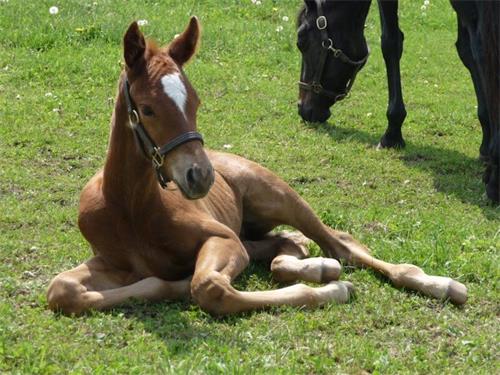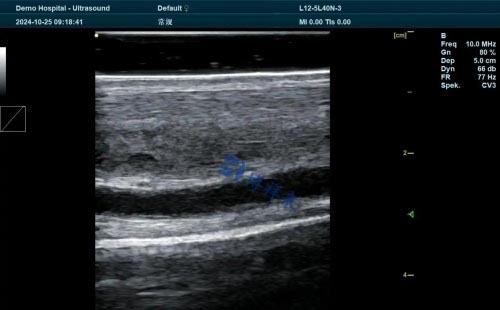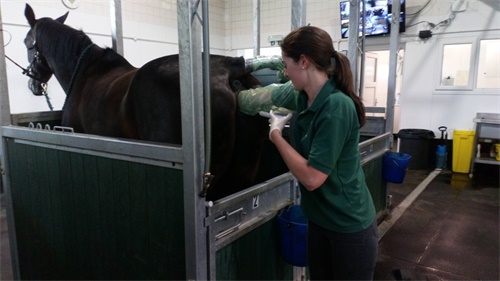For horse breeders and equine veterinarians alike, late pregnancy represents a critical window where nutritional management directly influences the health of both mare and foal. As a growing body of international research has shown, mares in their final trimester of gestation undergo rapid fetal growth and complex physiological changes, demanding careful dietary planning. In this article, we’ll explore science-based nutritional strategies tailored to the unique needs of pregnant mares during late gestation, incorporating perspectives from global equine studies and veterinary best practices.

Understanding the Final Trimester in Mares
Late pregnancy in horses—generally considered the last three months of gestation—marks a period of intense fetal development. By this stage, the fetus grows from about 20% of its birth weight to nearly full term. This surge in growth places considerable metabolic demand on the mare, particularly for energy, protein, and key micronutrients like calcium, phosphorus, and selenium.
Unlike ruminants, horses are hindgut fermenters, meaning their digestive efficiency depends significantly on forage quality and feeding frequency. During late pregnancy, the growing uterus also begins to displace abdominal organs, including parts of the digestive tract, potentially affecting feed intake and nutrient absorption. For these reasons, nutritional strategies must balance energy density with digestibility and palatability.
Body Condition Score: A Foundation for Management
In international equine practice, Body Condition Score (BCS) is a widely accepted tool for evaluating a mare’s nutritional status. The Henneke scale, used globally, ranges from 1 (emaciated) to 9 (obese). Studies from the University of Kentucky and the Royal Veterinary College in the UK suggest that mares should maintain a BCS between 5 and 6 during late pregnancy.
A mare that is too thin (BCS below 4) may produce a weaker foal and suffer from reduced milk production post-partum. Conversely, obese mares (BCS above 7) face increased risks of laminitis and dystocia (difficult birth). Therefore, regular BCS assessments are crucial throughout gestation, especially during the final trimester.

Energy Requirements: Adjusting for Growth and Maintenance
One of the most significant shifts in late pregnancy is the mare’s increased energy demand—estimated at 20–30% above maintenance levels. According to data from the National Research Council (NRC) and validated by European equine feeding standards, a 500-kg mare in late gestation typically requires around 15–18 Mcal of digestible energy (DE) per day.
To meet this need, a combination of high-quality forage and a concentrate ration is often recommended. The forage should remain the foundation of the diet (1.5–2.0% of body weight daily), but concentrates may be needed to bridge the energy gap, especially in mares with higher metabolic demands or limited forage intake due to abdominal compression.
Protein: Supporting Fetal and Placental Development
Protein quality—not just quantity—is vital during late pregnancy. Essential amino acids like lysine are crucial for fetal tissue formation, placental growth, and future milk production. According to international research published in the Journal of Equine Veterinary Science, the crude protein requirement increases from 8–10% to 12–14% of dry matter in the last trimester.
Soybean meal, alfalfa hay, and commercially formulated mare feeds are excellent protein sources. It's important to avoid non-protein nitrogen sources (common in ruminant feeds), as they are not efficiently utilized by horses and can cause digestive upset.
Mineral and Vitamin Supplementation
Late gestation is a period of high mineral transfer from mare to fetus. Calcium and phosphorus are especially critical for fetal bone mineralization. The ideal dietary calcium-to-phosphorus ratio should be maintained between 1.5:1 and 2:1. Both deficiencies and imbalances can result in weak foals or developmental orthopedic diseases.
Additionally, trace minerals like copper, zinc, and selenium deserve careful attention. Selenium deficiency is linked to White Muscle Disease in foals, and many European and North American soils are naturally selenium-deficient. In regions like the American Midwest or Northern Europe, supplementation may be necessary based on forage analysis or veterinary recommendation.
Vitamins A, D, and E are also essential. Vitamin E, an antioxidant, supports placental health and foal immunity. In hay-fed horses, where vitamin E levels decline over time, supplementation with 500–1000 IU/day is common practice in the US and Australia during late gestation.
Feeding Management Practices from Around the World
In countries like Germany and the Netherlands, equine nutritionists emphasize the gradual increase in concentrate feed beginning in month eight of pregnancy. This transition minimizes gastrointestinal disturbances and allows the mare’s metabolism to adapt smoothly.
In New Zealand, pasture-based systems often focus on increasing the nutrient density of grazing through rotational grazing and supplementation with balancer pellets, especially in regions with variable forage quality. Meanwhile, equine facilities in the US and Canada favor fortified commercial feeds specifically formulated for late-pregnant mares.
Regardless of location, best practices include:
Frequent small meals: Feeding smaller, more frequent meals prevents overloading the hindgut and improves nutrient absorption.
Access to clean water: Hydration supports digestion and placental circulation.
Routine dental checks: Ensures efficient chewing and nutrient utilization, especially in older mares.
Monitoring and Veterinary Collaboration
Regular veterinary checkups during late pregnancy allow for early detection of nutritional imbalances, weight fluctuations, or reproductive issues. Blood work may help assess selenium, vitamin E, or metabolic parameters like insulin or thyroid hormone levels.
Many breeding farms around the world use ultrasound to monitor fetal viability and placental thickness in mares. While not a nutritional tool per se, ultrasonography provides reassurance that fetal development is progressing normally, indirectly reflecting nutritional adequacy.

Transitioning to Lactation: Planning Ahead
Feeding plans in late pregnancy should also consider the upcoming demands of lactation. Milk production in the first month postpartum requires nearly double the energy of late gestation. Mares that enter lactation undernourished may experience rapid weight loss, reduced milk output, and poor foal growth.
Introducing lactation feed rations about two weeks before the expected foaling date allows mares to adjust metabolically. This strategy is common in breeding farms in France and the US, where production-oriented management is closely aligned with nutritional science.
Common Mistakes and International Recommendations
Across different management systems, common pitfalls in late-pregnancy nutrition include:
Overfeeding energy without balancing nutrients: Can lead to obesity without improving fetal health.
Neglecting forage quality: High-fiber, low-nutrient hay doesn’t meet rising demands.
Ignoring mineral imbalances: Especially in selenium or copper-deficient regions.
To avoid these issues, organizations like the British Horse Society and American Association of Equine Practitioners recommend regular forage testing, consultation with equine nutritionists, and adapting feed programs based on individual mare assessments.
Conclusion
Late pregnancy in mares is a delicate, high-stakes phase where nutrition directly influences outcomes for both mare and foal. By prioritizing balanced energy, quality protein, and targeted vitamin-mineral supplementation, horse owners can ensure healthier pregnancies and better foal survival rates.
Globally, the best nutritional strategies combine scientific understanding with region-specific practices, whether that means fortified feeds in North America, rotational grazing in Oceania, or hay analysis in Europe. No matter the geography, proactive nutritional management remains the cornerstone of successful equine reproduction.
References
National Research Council. (2007). Nutrient Requirements of Horses (6th ed.). The National Academies Press. https://nap.nationalacademies.org/catalog/11653/nutrient-requirements-of-horses-sixth-revised-edition
Lawrence, L. M., & Pagan, J. D. (2020). Feeding the pregnant mare: A practical approach. Journal of Equine Veterinary Science, 94, 103228. https://doi.org/10.1016/j.jevs.2020.103228
British Horse Society. (2023). Managing the pregnant mare. https://www.bhs.org.uk
American Association of Equine Practitioners (AAEP). (2021). Nutrition in the pregnant mare. https://aaep.org/horsehealth/nutrition-pregnant-mare
Ellis, A. D., & Hill, J. (2019). Late gestation nutrition and foal development. Equine Nutrition Journal, 4(2), 45–56. https://www.equine-nutrition.org
tags:


